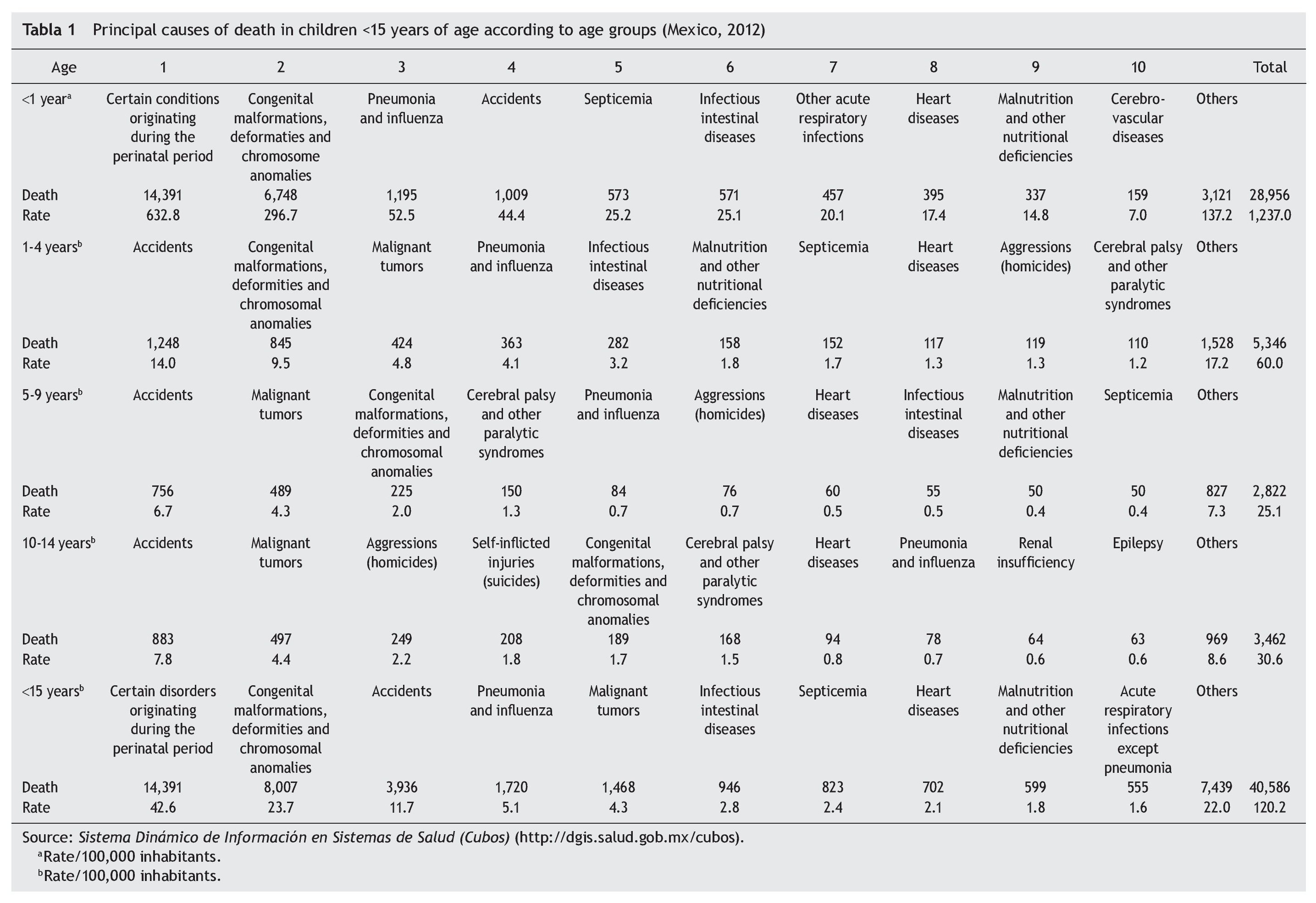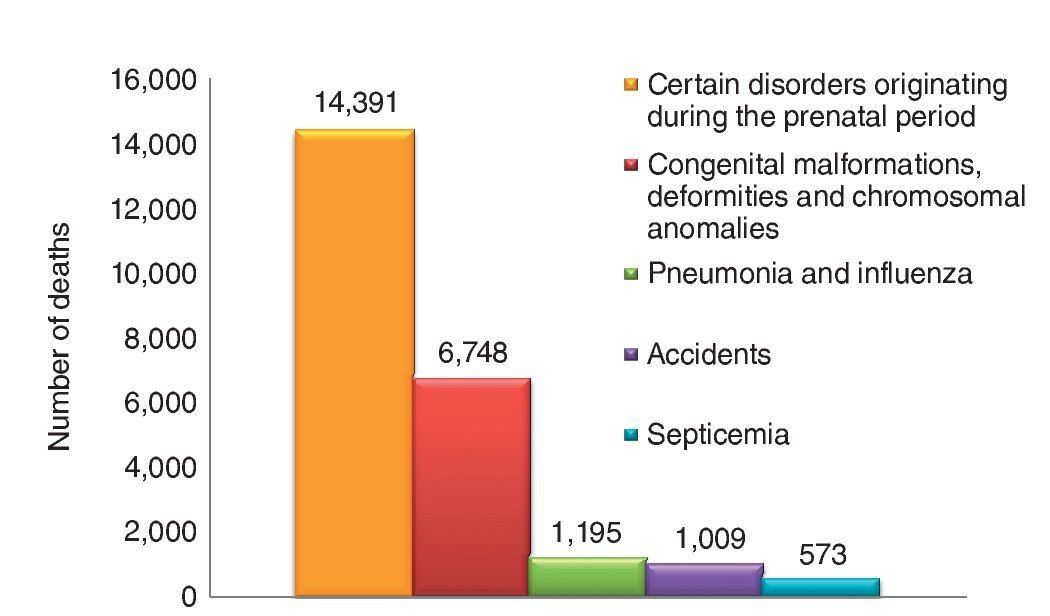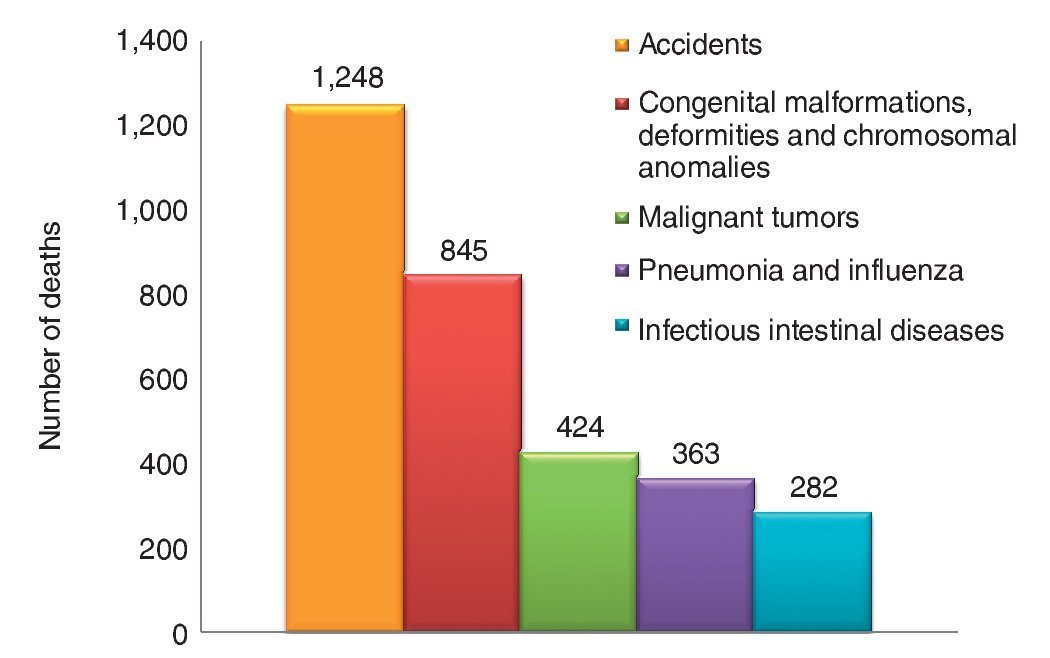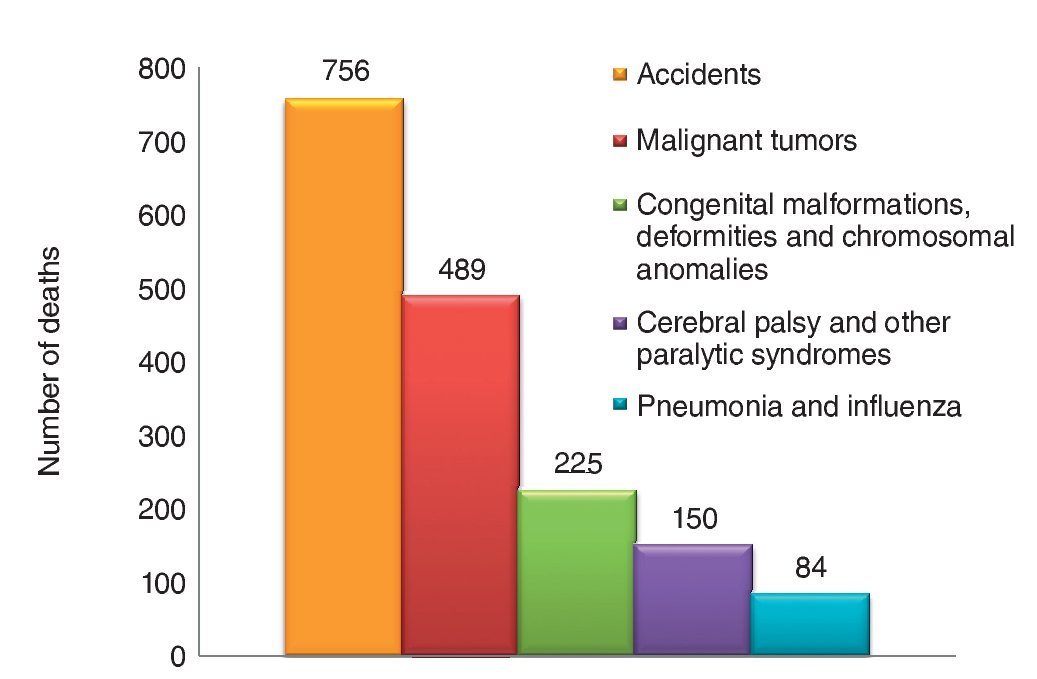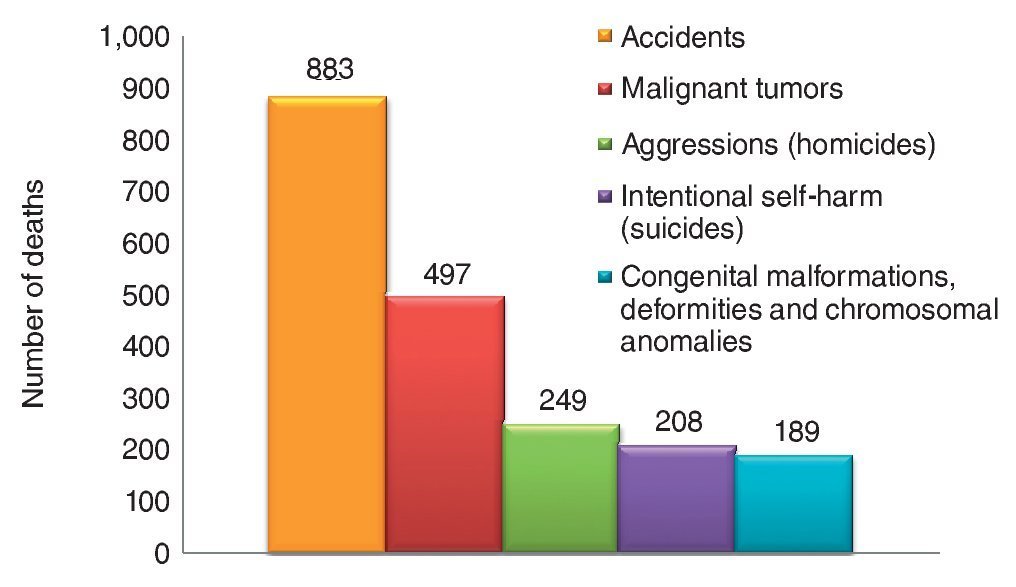In recent decades, discussion about mortality in the first years of life was synonymous with deaths due to communicable causes, usually of infectious origin. Currently, the epidemiological transition with the ubiquitous change in the profile of causes of death not only affects the older population. It has permeated into all age groups including children and adolescents who are gradually affected by causes of death that are classified as violent and accidental or non-transmissible diseases.
In this issue of Boletin Medico de Hospital Infantil de México, we take the opportunity to comment on information concerning death statistics corresponding to the year 2012 and released by INEGI (Instituto Nacional de Estadística y Geografía) and the Ministry of Health as the latest definitive mortality figures. For the calculation of the corresponding rates, the latest projections of CONAPO (Consejo Nacional de Población) have been used with the exception of the rates of children <1 year of age for whom the denominator is births obtained by the statistics of births according to SINAC.*
Table 1 shows in the form of a matrix the ten leading causes of mortality in the population of children <15 years of age presented according to 5-year age groups. It also shows the relative place that the cause occupies and the number of corresponding deaths, as well as the value of the rate per 100,000 population of the corresponding age.
It is important to analyze, in the first instance, the structure by age for each group. As expected, and in accordance with the pattern universally observed, the highest mortality occurred during the first year of life. It increased to ∼29 thousand deaths (rate 12.7 deaths/100,000 births), which represents 71% of the deaths of the group of <15 years of age. Almost half of these deaths (infant deaths) occurred due to certain conditions originating in the perinatal period (14,391), which placed them as the first cause of death. As a second cause of death, other non-infectious causes followed: congenital malformations, deformities and chromosomal abnormalities, which explained 23.3% of deaths. In other words, the two leading causes of death explained 73% of infant deaths. This, by the way, implies a serious problem for infant mortality reduction programs. They are precisely the most difficult causes to combat because they have to do with problems both of the mother and the child. Within this age group, other non-infectious causes of death were notable such as heart diseases (8th place with 395 deaths), cerebrovascular diseases (10th place with 159 deaths) and deaths due to malnutrition and other nutritional deficiencies (9th place with 337 deaths). As the fourth cause of death, accidents stood out and resulted in the deaths of 1009 minors during 2012.
In terms of infectious causes of death, these refer essentially to respiratory infections (including pneumonia and influenza), intestinal infections and septicemia. Together they reached a relatively low weight because they accounted for <10% of the total number of infant deaths (Fig. 1).
Figure 1 Principal causes of death in children <1 year of age (Mexico, 2012).
As for the 1- to 4-year-old age group, the situation was similar. None of the three main causes found were infectious. However, from this age group, the main cause reported was accidental deaths, which alone represented 23% of deaths. When these figures are added to deaths due to homicide (frequently due to carelessness on the part of the parents), the percentage increased until it explained that one of each four deaths occurred due to external causes. In order of magnitude, congenital malformations, deformities and chromosomal abnormalities followed (845, rate of 9.5/100,000 with a relative weight of almost 16%) and malignant tumors (424 deaths, rate of 4.8/100,000 with a relative weight of 8% with respect to mortality for that age). Other non-infectious causes were observed related to malnutrition, heart diseases and cerebral palsy; the latter cause gained space as the child's age progressed (Fig. 2). The group of 5- to 9-years of age traditionally is the one that has shown lower levels of mortality. With a total of 2822 deaths and a rate of 25 deaths/100,000 population from that age group (compared with the group of 1 to 4 years that had a rate of 60 deaths/100,000 population and a total almost twice of deaths), this represented <7% of the total deaths of children <15 years of age. Accidents remained as a first cause of death in a third of the children of this age followed in importance by malignant tumors, congenital malformations, cerebral palsy, and heart problems that globally accounted for another third of the deaths in this age group (Fig. 3). Within the ten most important causes of death, only three were infectious (pneumonia and influenza, infectious intestinal diseases and septicemia) and represented barely 6% of the total deaths. Finally, the group of pre-adolescents 10 to 14 years of age reflected a very different profile from other age groups to the extent that they presented a very strong group of external causes (accidents, homicides and suicides). They occupied, respectively, the first (883), third (249) and fourth (208) places and together accounted for almost 40% of deaths for this age group (Fig. 4). Malignant tumors as a second cause accounted for 15% of deaths (497). Infectious causes are practically absent with the exception of pneumonia and influenza that occupied 8th place (with 78 deaths). The main results regarding the causes of mortality in the group of children <15 years of age are as follows:
Figure 2 Principal causes of death in children 1- to 4-years of age (Mexico, 2012).
Figure 3 Principal causes of death in children 5- to 9-years of age (Mexico, 2012).
Figure 4 Principal causes of death in children 10- to 14-years of age (Mexico, 2012).
• During 2012 there were 40,586 deaths reported of children <15 years of age, of which 81.7% were found among the 10 main causes of deaths, i.e., 33,147. The first three causes concentrated 65% of deaths, and none corresponded to infectious causes. The three first causes were certain disorders originating during the perinatal period (14,391), congenital malformations (8007) and accidental deaths (3936) which, in total, represented 26,334 deaths. The rates of mortality for those causes were 42.6, 23.7 and 11.7 deaths/100,000 population <15 years of age, respectively.
• Only four of the ten leading causes were infectious in character and accounted for only 10% of the total deaths of the group analyzed. The causes were pneumonia and influenza (4th place with 1720 deaths and a rate of 5.1), intestinal infectious diseases (6th place with 946 deaths and a rate of 2.8), septicemia (7th place with 823 deaths and a rate of 2.4) and acute respiratory infections (10th place with 555 deaths and a rate of 1.6).
Conflict of interest
The authors declare no conflict of interest of any nature.
* The figures adjusted from the SINAC (System of Births) 2012 have been taken into consideration as established by the General Department of Health Information.
Received March 6, 2014;
accepted March 20, 2014
* Corresponding author.
E-mail: sonia_fernandez@prodigy.net.mx (S.B. Fernández Cantón).




